Detecting biogeomorphological signatures of life in rocks on Earth and Mars
Organisation/Company: Université Clermont Auvergne
Department: Institut Sciences de la vie, Santé, Agronomie, Environnement
Research Field: Earth science, Geology
Application Deadline 28/04/2023 – 17:00 (Europe/Paris) – contact to apply: dov.corenblit@uca.fr
Offer Description
Among the biogenic landforms involving microorganisms that are potentially relevant facets of biosignatures on Mars, microbially induced sedimentary structures (MISS) are promising candidates (Noffke, 2010, 2021). They originate from the interaction between microbial mats constituted by microbe consortiums and their extracellular polymeric substances (EPSs) and sediment dynamics in the intertidal habitats of fluvial, marine, lacustrine and hypersaline environments, e.g. sabkhas. They are widespread on the Earth in various environments at the interface between water and land. They form rapidly (few days to weeks) and, under adequate conditions of sedimentation they can remain fossilised for billions of years in rock records (Davies et al., 2017; Davies and Shillito, 2021). Microbial mats include bacteria, archaea, protozoans, algae, and fungi leading to the formation of various features from millimetre to decametre scales such as knobby surfaces, sieve-like surfaces, laminar structures, wrinkles, mat chips, palimpsest ripples, roll-up, gas domes and mat cracks (Noffke, 2010; Davies et al., 2016). Of particular note are mat cracks, which will form the focus of these study. These features have clear abiotic analogues in the crack patterns formed abiotically in drying mud, so the development of the first robust criteria to distinguish biotic and abiotic mud cracks is both readily facilitated by natural examples (modern and ancient), and has immediate utility for distinguishing such in instances of ancient rock record cases and from new rover imagery from Mars.
Detailed understanding of MISS formation on sediment and preservation in rocks is crucial for searching signatures of early life on Earth and Mars. Expert knowledge of MISS structures that are well known from their visual aspect to have a biotic origin, or were at least a strong suspicion exist that they are generated by microorganisms, thus are relevant for searching life signature on Mars (Cady et al., 2004; McLoughlin et al., 2007; Noffke, 2010; Davies et al., 2016). Such method is based on reasoning via abductive inference with the assumption that the same, or equivalent, biogeomorphological processes result in landforms displaying similar characteristics.
Geomorphological visual descriptors on images of the Martian rovers (and potentially orbiters) offer a great potential for the search for biosignatures. Optimizing the use of images for searching life signatures requires the development of adapted and standardized conceptual frameworks and methods (Davies et al., 2016; Noffke, 2018). When the data of an image have adjacency structures that can be caught by the human brain, artificial Neural Network can use these structures by emphasizing local relationships between areas of interests. Neural Network analyses are now recognized as extremely performant in object recognition and classification on images, even of poor definition (LeCun et al., 2015; Zhao et al., 2019). Such techniques have been successfully used in geology and geomorphology for automatic mineral and landform recognition (Li et al., 2020) and in biology for biofilm characterisation (Dimauro et al., 2020).
The objectives of the present ExoBioGeo PhD project are largely based on preliminary results obtained since 2018 by the international research team from different laboratories in France and from the University of Cambridge and the University of Oxford, UK, published in the journal Astrobiology (Corenblit et al. 2019; in press). They are also linked to the start of a collaboration with the team of the Institut de Recherche en Astrophysique et Planétologie (IRAP, Toulouse) which controls the ChemCam and SuperCam cameras of the Mars rovers Curiosity and Perseverance. The student will join the camera control team during his PhD. The main objective is to gain a better understanding of MISS formation, preservation and variability across environmental and biological gradients and to develop and test the best fitting method for the automatic detection of images which represent the most potential to recognize MISS-like structures on the surface of Mars.
The PhD project is structured into tow tasks (T):
T1:Field observations of present and ancient MISS for (i) establishing an expert classification of MISS types; and (ii) for constituting a database of images of present and ancient MISS that can be used with Neural Network. The biogeomorphological analyses of ancient MISS will be coupled with geochemical analyses of rock samples at the lab in order to study the relation between geomorphological and chemical parameters.
T2:Development of the ExoBioGeo adapted Neural Network algorithm (NNa) for the automatic detection of MISS-like structures on images from the field. The potential of this algorithm for use with Martian rover images will be assessed. Special attention will be given on image pre-processing, image segmentation and multi-scale detection approaches.
Cited references:
- Cady, S.L., Farmer, J.D., Grotzinger, J.P., et al. (2004) Morphological biosignatures and the search for life on Mars. Astrobiology 3:351–368.
- Corenblit, D., Darrozes, J., Julien, F., Otto, T., Roussel, E., Steiger, J., and Viles, H. (2019). The search for a signature of life on Mars: a biogeomorphological approach. Astrobiology 19:1279-1291.
- Corenblit, D., Decaux, O., Delmotte, S., Toumazet, J.-P., Arrignon, F., André, M.-F., Darrozes, J., Davies, N., Julien, F., Otto, T., Ramillien, G., Roussel, E., Steiger, J. and Viles, H. (in press). Signatures of life detected in images of rocks using Neural Network analysis demonstrate new potential for searching for biosignatures on the surface of Mars. Astrobiology: DOI: 10.1089/ast.2022.0034
- Davies, N.S., and Shillito, A.P. (2021) True substrates: The exceptional resolution and unexceptional preservation of deep time snapshots on bedding surfaces. Sedimentology 68:3307-3356.
- Davies, N.S., Liu, A.G., Gibling, M.R., et al. (2016) Resolving MISS conceptions and misconceptions: a geological approach to sedimentary surface textures generated by microbial and abiotic processes. Earth-Science Reviews 154:210-246.
- Davies, N.S., Shillito, A.P. and McMahon, W.J. (2017) Short-term evolution of primary sedimentary surface textures (microbial, abiotic, ichnological) on a dry stream bed: modern observations and ancient implications. Palaios 32:125-134
- Dimauro, G., Deperte, F., Maglietta, R., et al. (2020) A Novel Approach for Biofilm Detection Based on a Convolutional Neural Network. Electronics 9:881.
- LeCun, Y., Bengio, Y., and Hinton, G. (2015) Deep learning. Nature 521:436-444.
- Li, S., Xiong, L., Tang, G., et al. (2020) Deep learning-based approach for landform classification from integrated data sources of digital elevation model and imagery. Geomorphology 354:107045.
- McMahon, W.J., Davies, N.S., Liu, A.G. and Went, D.J. (2022) Enigma variations: characteristics and likely origin of the problematic surface texture Arumberia, as recognized from an exceptional bedding plane exposure and the global record. Geological Magazine 159:1-20.
- Noffke, N. (2010) Microbial Mats in Sandy Deposits from the Archean Era to Today. Heidelberg, Germany: Springer Verlag.
- Noffke, N. (2018). Comment on the paper by Davies et al. “Resolving MISS conceptions and misconceptions: A geological approach to sedimentary surface textures generated by microbial and abiotic processes”(Earth Science Reviews, 154 (2016), 210–246). Earth-Science Reviews 176:373-383.
- Noffke, N. (2021) Microbially induced sedimentary structures in clastic deposits: implication for the prospection for fossil life on Mars. Astrobiology 21:866-892.
- Zhao, Z.Q., Zheng, P., Xu, S.T. et al. (2019) Object detection with deep learning: A review. IEEE Transactions on Neural Networks and Learning Systems 30:3212-3232.
Skills/Qualifications
Applicants will have obtained a Master degree (or equivalent) in Geosciences or Earth Sciences with an interest in Palaeontology, Planetology or Astrobiology. Experience with numerical modelling, mathematics or programming language (e.g. Python, C++) are required.
Specific Requirements
As the PhD will be conducted between France and the Department of Earth Sciences at the University of Cambridge, applicants should at least have an excellent English level.
Eligibility criteria
Master Degree in Geosciences or Earth Sciences with an interest in Palaeontology, Planetology or Astrobiology. Experience with numerical modelling, mathematics or programming language (e.g. Python, C++) are required. A minimum of 4 months training in a research laboratory.
This PhD research will be conducted in close collaboration with Prof. Neil S. Davies, Professor at the Department of Earth Sciences at the University of Cambridge. The candidate must be willing to travel to Cambridge, UK, in order to work with Prof. Neil S. Davies.
The PhD student will also occasionally travel to Toulouse, France, to collaborate with (i) the LEFE laboratory that will conduct experiments under controlled conditions related to the formation of MISS (F. Julien, Dr. J. Leflaive and Dr. S. Boulêtreau); (ii) the GET laboratory for geochemical analyses on rock samplings (Dr. J. Darrozes); and (iii) with the IRAP laboratory that oversees the ChemCam and SuperCam cameras on the Mars rovers Curiosity and Perseverance (Dr. O. Gasnault, Dr. W. Rapin and Dr. S. Maurice).
Selection process
https://www.uca.fr/formation/nos-formations/graduate-school-cap-20-25
Clermont Auvergne University, Clermont-Ferrand, France and its Clermont Auvergne Project Graduate School (CAP GS) programme offer a PhD opportunity that will be conducted in partnership between Clermont Auvergne University and a foreign research Institution. The associated Changing Environments Graduate Track presents two PhD proposals published on EURAXESS, of which one only will be funded. The selection process will take all applications into consideration. The best fitting candidate will be invited to an audition end of June / beginning of July. The laureate will do her/his research on the selected topic at the PhD supervisor’s research laboratory at Clermont Auvergne University in Clermont-Ferrand.
Applicants who have earned their higher educational qualifications outside Europe or in Greece must attach to their application a certificate of equivalence of the diploma (Master degree). The certificate can be obtained following the procedure indicated here: https://phoenix.ciep.fr/inscriptions/
Application deadline: Friday April 28th 2023, 5 pm Paris time, 2023. Applications arriving after the application deadline will not be taken into consideration.
Additional comments
Applications should include a cover letter indicating your motivation and relevant research experience, a detailed curriculum vitae, academic transcripts and contact information for at least two referees. Please send the application via Email to : Dr. Dov CORENBLIT (dov.corenblit@uca.fr), Prof. Johannes STEIGER (johannes.steiger@uca.fr) and Prof. Neil S. DAVIES (nsd27@cam.ac.uk).
PhD studies will start in November 2023. A salary will be paid for 3 years (36 months), covering Social Security. Additional funding of 15,000 euros for travel expenses between Clermont-Ferrand and the foreign cosupervisor’s research laboratory is available.
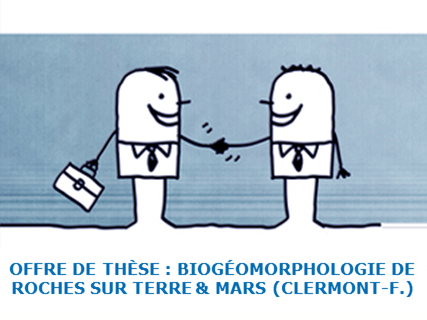
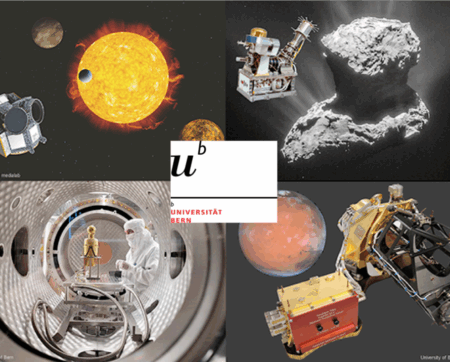
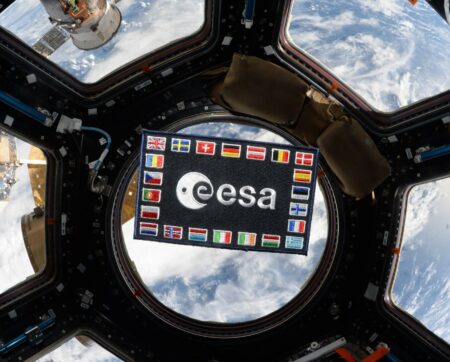
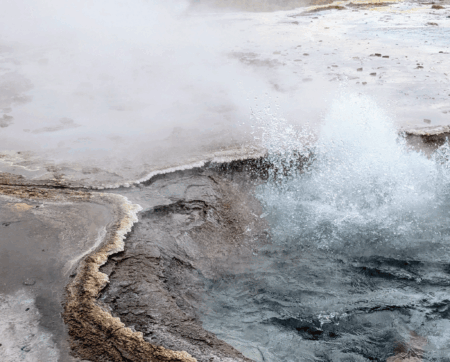
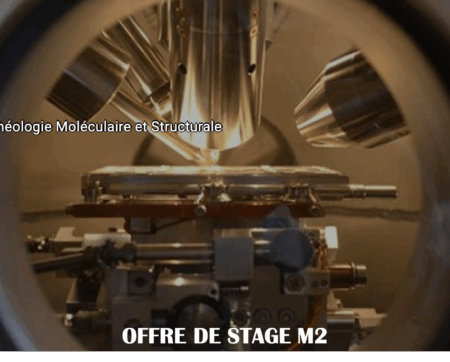
Aucun commentaire sur l'article PhD thesis offer on biogeomorphological signatures of life in rocks on Earth and Mars